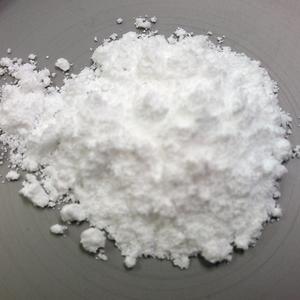World's First Volume Production of the Bone Substitute Material Octacalcium Phosphate by Japan Fine Ceramics and Tohoku University
- Creating new business that meets social needs through advanced technology -
Japan Fine Ceramics Co., Ltd. ("JFC"), a JGC Group company involved in functional materials manufacturing, is pleased to announce that we have succeeded in the world's first volume production of octacalcium phosphate (OCP),1 a promising bone substitute material that is easily absorbed by the body, and has started shipping samples with the intention of collaborating with a variety of pharmaceutical companies and medical device manufacturers.
1. Background and purpose
With Japan currently home to the world's oldest population as a "super-aged society" and Italy, Germany, Spain, and other countries set to follow by 2030, the need for superior bone substitute materials is expected to increase2 as a method of treating a growing number of bone and joint patients with fractures, osteoarthritis (including spinal osteoarthritis), or osteoporosis, especially in consideration of the significantly lower quality of life after bone disease.
As a manufacturer of fine ceramics, we have studied new business prospects in bone-regenerative medicine, and joint research and development on mass-producing OCP to expand clinical applications is aimed at accelerating widespread adoption of research results. This work builds on many years of research by Professor Osamu Suzuki of Tohoku University Graduate School of Dentistry on OCP, which can be considered a precursor of inorganic components of bone called bone apatite crystals.
2. Development
Current materials used in bone-regenerative medicine include ceramic biomaterial calcium phosphates such as hydroxyapatite (HA) and beta-tricalcium phosphate (β-TCP). Effective treatment and faster recovery call for further development and marketing of bone substitutes with high osteoconductive property and excellent bioresorbability.
Professor Suzuki found that OCP possesses these osteoconductive properties in 1991 when he began his research and in subsequent studies, and at the same time, he developed a method of bench-scale synthesis with reaction tubes that enables localized and continuous synthesis, established stable synthesis of several grams per batch with a batch crystallization method, and continued to study about the capacity of bone regeneration and the synthesis. However, in his attempts to scale up synthesis, it proved very difficult to ensure OC P quality (linked to byproduct precipitation), which prevented advances beyond bench-scale synthesis. This led to a joint effort with Professor Suzuki and others in 2013 to scale up OCP synthesis. With continuous flow synthesis attracting interest in pharmaceutical production, a continuous crystallization process was developed in March 2023 to synthesize homogeneous OCP without byproducts, in quantities sufficient for clinical evaluation.
3. Future policies
The continuous crystallization process established has greatly increased OCP production capacity, to 170 g/hr.3 As OCP demand grows, it will be relatively easy to scale up production further using this process. By collaborating with a wide range of pharmaceutical and medical device manufacturers, we intends to commercialize the OCP as a bone substitute material.
Comments from Professor Suzuki
Bioceramics development took off in the 1980s, although after HA and β-TCP became available in the 1990s, the pace of development for calcium phosphates seemed to slow down. In the 2000s, however, new calcium phosphates with favorable bioresorbability were developed, such as carbonate apatite. Because we had established a method of bench-scale synthesis in 1991, our research group could synthesize a certain amount of OCP. The ongoing research and results that this enabled have now led to OCP biomaterials attracting worldwide attention among researchers and corporate engineers in this field. JFC has been collaborating with us, and we are pleased that the company has succeeded in expanding bench-scale synthesis to produce quantities sufficient for clinical evaluation while maintaining consistent quality. We look forward to seeing widespread adoption of OCP.
1: Chemical formula: Ca₈H₂(PO₄)₆・5H₂O. A precursor of HA formation from aqueous solution, and a biomaterial considered a precursor of bone apatite crystals. Also known as octacalcium phosphate. As suggested by the chemical formula, OCP contains a large amount of water molecules, and unlike HA and β-TCP, it is not available in a single crystal phase without decomposing through sintering. Research has therefore been reported on composites combining OCP with tissue-derived polymers, natural polymers, and synthetic polymers. Like β-TCP, OCP exhibits bioresorbability, and it is also reportedly able to activate several cells associated with bone tissue, including osteoblasts.
2: Crystallization time: 1 hour. The synthesis process consists of seven steps from initial solution preparation to final characterization. The time indicated here is for crystallization.


